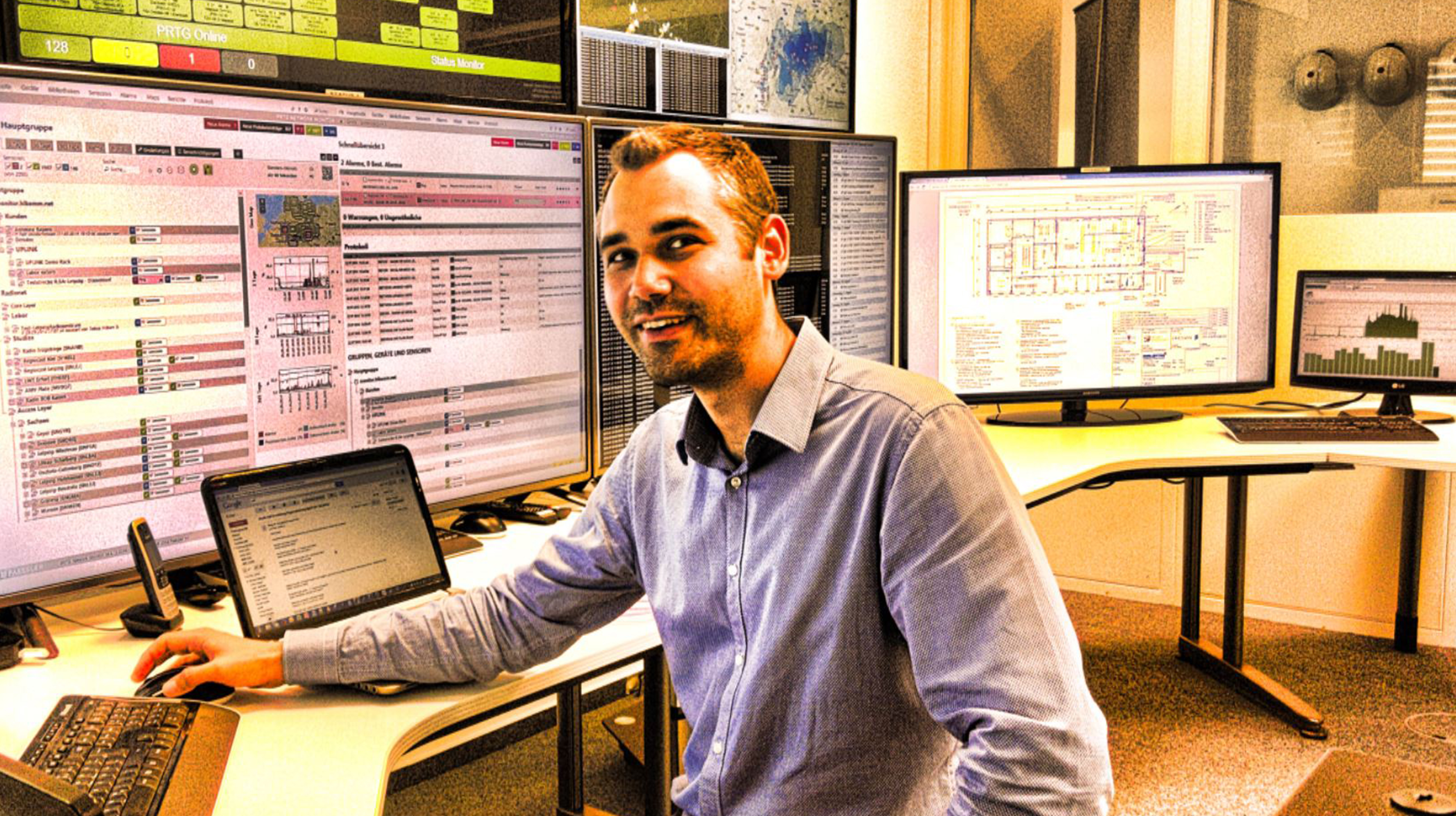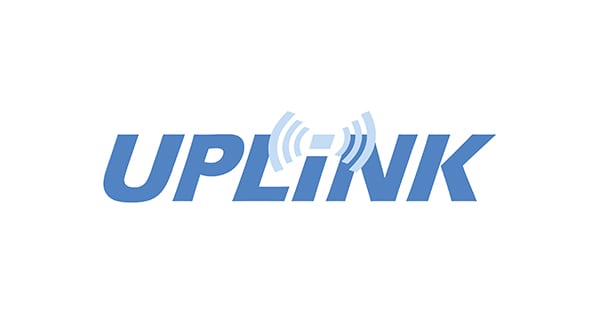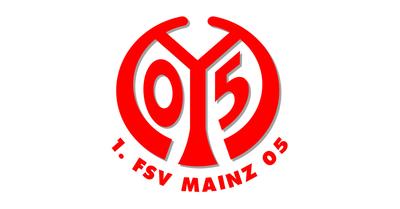UPLINK monitors its FM signals for millions of listeners with Paessler PRTG
About UPLINK Network
Since launching its operations on January 1, 2016, UPLINK Network GmbH from Düsseldorf has established itself as the second largest FM radio network operator in Germany. With antennas at more than 100 locations (radio masts and towers), UPLINK transmits the programs of private broadcasters to listeners via FM. The company’s customers include city, regional, and specialty radio stations in six states in Germany.
UPLINK Network GmbH, an FM radio network operator based in Düsseldorf, Germany, was founded in 2013 by its CEO Michael Radomski. At that time, the FM market was still a geographic monopoly. An amendment to the German Telecommunications Act (TKG) finally put an end to the restrictive distribution of broadcasting rights. The TKG originally stipulated that FM would be switched off at the end of 2015 to make way for DAB+ digital radio. But this provision was eventually rejected. As a result, UPLINK was able to launch its operations with FM on January 1, 2016.
Instead of building new antennas, the FM radio network operator made use of the existing infrastructure of Media Broadcast, the company that once held the monopoly. The subsequent development of the new company was nothing short of extraordinary: by the end of 2016, UPLINK had already become the second largest FM radio network operator in all of Germany. At its transmission sites (i.e., the masts and towers), UPLINK works together with Deutsche Funkturm GmbH (DFMG). Like other FM service providers, UPLINK rents the space for its server racks, power supplies, and cooling elements from DFMG. A team of around 20 permanent employees routes the FM signals of private radio stations (currently, around 20) via fiber optic lines to the transmission sites, where computers are installed to decode then amplify the digitized signals for analog broadcasting.

“When it comes to FM, it often helps to look at several different warning messages. By analyzing the results of up to 150 PRTG monitoring sensors, we now have a highly sophisticated overview that makes it easy to identify errors. With PRTG, we can identify impending errors in the components of our transmitters at an early stage and intervene before costly failures arise.”
Michael Radomski, CEO of UPLINK GmbH
Unlimited features
UPLINK is now present in FM transmission masts and towers throughout Germany, including all the major TV towers such as the Olympic Tower in Munich and the Television Tower on Alexanderplatz in Berlin. The result is a decentralized infrastructure that must constantly stay up and running in order to provide a good listening experience for listeners. For a new company like UPLINK, hiring technicians to continually monitor availability at each of the masts and towers is hardly ideal. The company therefore monitors the distributed infrastructure centrally, from its two network operations centers in Düsseldorf and Berlin. However, UPLINK must not only monitor the IT components inherent to the transmission sites, but also FM-related devices, power supplies, ambient temperatures, and humidity. In the middle of 2014, UPLINK CEO Michael Radomski and his team began to search for a tool that could monitor each of these elements. While attending a showcase held by HL komm Telekommunikations GmbH, a service provider from Leipzig, they were introduced to the all-in-one monitoring solution PRTG Network Monitor from the Nuremberg-based company Paessler AG.
“PRTG immediately caught our attention,” reports Ansgar Beeg, Co-Founder and Head of IT & Development at UPLINK. “Above all, we were impressed with the ease of use and the extensive monitoring and alarm functions of HL komm’s system. Without further ado, we downloaded the free trial of PRTG and gave it a spin. All the clients in our infrastructure are IP-enabled, but the vast majority of our network devices are of the unconventional variety. We therefore wanted to make sure the software could also monitor devices such as encoders, decoders, and FM transmitters. To our surprise, it monitored these non-IT devices just as extensively as conventional IT components. The flexibility of PRTG is also reflected in its API. We were able to connect the software to our internal SQL database via the interface without a single call to Paessler tech support. The test went so well that we immediately decided to go with PRTG.”
The monitoring system
Shortly thereafter, system integrators from HL komm installed the company’s PRTG server in their own data center with a high level of redundancy to ensure maximum availability, thereby providing UPLINK with a monitoring solution as SaaS (Software as a Service). The entire UPLINK infrastructure is set up as a closed VPN including 150 decentrally controlled FM transmitters (an average of 10 to 20 units in 19” racks) at over 100 locations, as well as additional supply line technology at nearly 20 radio and TV studios.
PRTG uses a variety of different measuring points (aka “sensors”) to monitor both the IT and non-IT components. These sensors continuously send information on the status of devices, applications, and systems back to the software. UPLINK currently uses up to 150 sensors on a single FM transmitter to measure high-frequency indicators and the performance of the multiplexed FM hub, among other things. In addition, sensors for audio inputs and encoders as well as IP technology are integrated into the studio. UPLINK also uses PRTG to measure the quality of the lines in HL komm’s network. Thanks to PRTG, the Düsseldorf-based company can now monitor all the technology at the broadcasting locations, including IP technology for main and backup lines, RDS encoders, decoders, and FM transmitters. Since its IP-enabled UPSs are of the utmost importance, the company continually monitors the power of these devices with sensors. Finally, UPLINK uses PRTG environmental monitoring features to measure temperature, humidity, and air pressure at the transmission sites in real time.
“Our FM transmitters are located inside radio towers, in spaces similar to server rooms,” explains Michael Radomski. “Transmitters can get quite hot. If an AC unit goes down on a hot summer day, our equipment can overheat and crash. With the help of PRTG, we can keep a constant eye on temperatures, and if necessary, take action immediately.”
Troubleshooting made easy
By setting targeted threshold values for each sensor, UPLINK is able to identify errors in its decentralized infrastructure at an early stage. If any of these thresholds are exceeded, PRTG sounds the alarm immediately. The corresponding alert (including live data) is sent by email to the staff of the network operations centers in Berlin and Düsseldorf. Using the intuitive PRTG web interface, the teams can then perform an analysis to determine the extent of the malfunction or error and initiate targeted countermeasures. The network operations centers are in direct contact with the maintenance technicians responsible for the respective broadcasting locations. As a result, these technicians are immediately brought up to speed on the error (and the required actions) as they make their way to the radio mast or tower. The actual troubleshooting at the site is therefore quick and easy.
Michael Radomski, CEO of UPLINK GmbH: “When it comes to FM, it often helps to look at several different warning messages. By analyzing the results of up to 150 PRTG monitoring sensors, we now have a highly sophisticated overview that makes it easy to identify errors. With PRTG, we can identify impending errors in the components of our transmitters at an early stage and intervene before costly failures arise.”
UPLINK employees have customized their PRTG dashboard to make their everyday monitoring more efficient. Thanks to the software’s flexible CSSs, this customization is also quick and easy. By making adjustments to colors and the display of monitored areas, UPLINK has been able to speed up its internal monitoring workflows considerably. “Customizing PRTG to meet our requirements turned out to be even easier than we had imagined during the trial,” concludes Ansgar Beeg, who was responsible for the project. “Synchronizing the monitoring dashboard and alarm emails with our corporate identity was a piece of cake.”

Conclusion: Monitoring as the basis for corporate success
Michael Radomski summarizes the benefits UPLINK experiences with PRTG: “PRTG lets us monitor our extremely decentralized infrastructure from one centralized location. Since we don’t need technicians to keep an eye on things at the sites of the local stations, we’ve been able to reduce our required manpower by more than 80%. At the same time, PRTG makes it possible to integrate new sites extremely quickly. With the right planning and structure, we can centrally monitor and administer up to 10,000 sensors from a single workstation. Although we’re still in our early stages, we’ve already made inroads in an industry once run by a monopoly by relying on the agility and flexibility of PRTG.”
Get to know more happy PRTG customers
Customer success story DR. ERLER KLINIKEN & PRTG
How the comprehensive monitoring of IT and medical systems with PRTG can prevent downtime and increase operational reliability at DR. ERLER KLINIKEN. ➤ Read the customer success story now!
Customer success story 1. FSV Mainz05 & PRTG
The IT team of 1. FSV Mainz05 monitors its IT and the entire stadium technology with PRTG so that everything runs penalty free. ➤ Read the complete customer success story now!
Customer success story Centroflora Group & PRTG
With PRTG, Centroflora gets a holistic view of their industrial environment, particularly processes based on Siemens PLCs and the power supply. ➤ Read the customer success story now!



